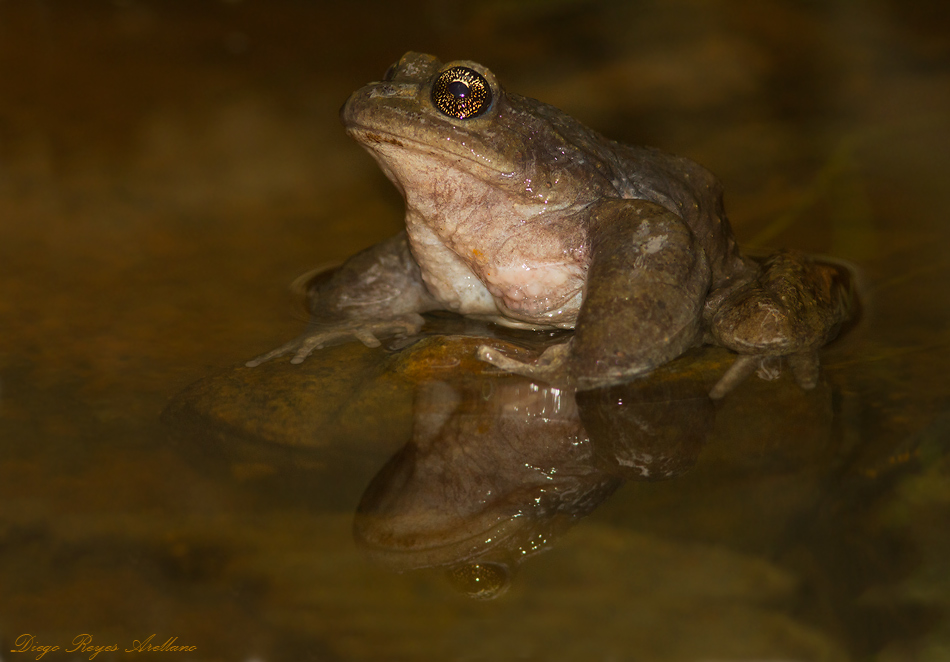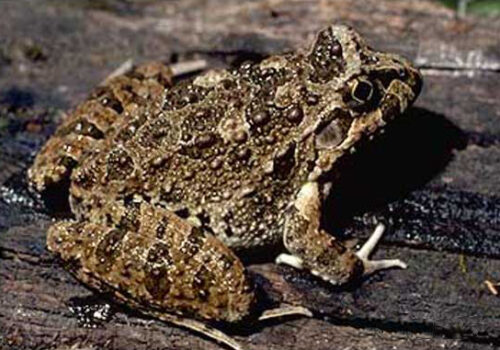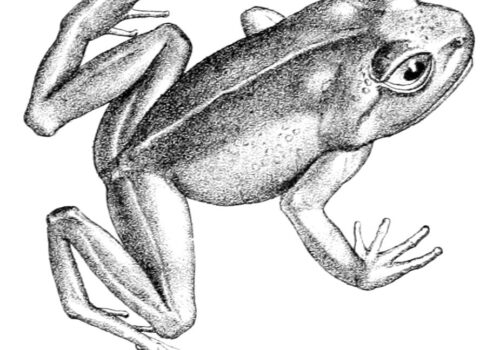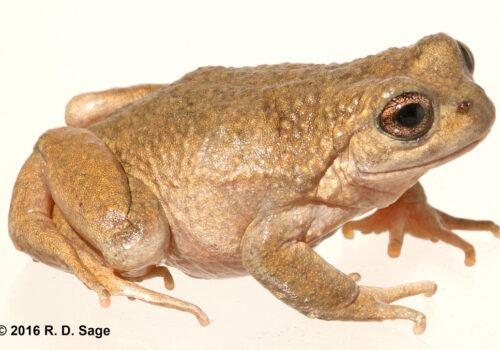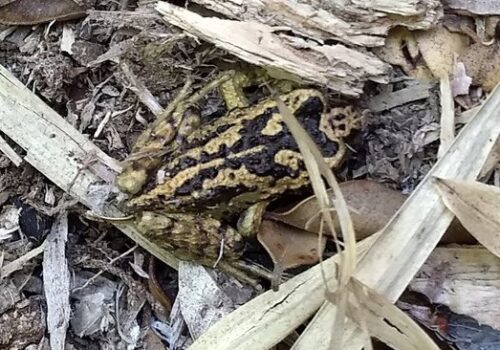- Meet Alsodes nodosus: A Hidden Jewel of the Chilean Forests
- Taxonomy and Classification: Understanding Alsodes nodosus’s Family Tree
- A Journey Through the Natural Habitat of Alsodes nodosus
- Physical Characteristics: A Frog Built for the Forest’s Shadows
- Behavior and Life Cycle: Hidden Patterns beneath the Canopy
- The Ecological Role of Alsodes nodosus: An Underestimated Creator of Balance
- Threats and Conservation Status: Skeptical Survivors in the Anthropocene
- Cultural and Scientific Significance: Local Icons and Global Indicators
- Conclusion: A Call for Appreciation, Awareness, and Action
Meet Alsodes nodosus: A Hidden Jewel of the Chilean Forests#
Consider the lush, temperate forests of southern Chile, blanketed in mist, where relentless rainfall feeds pristine streams and carpets the forest floor in vibrant moss and ferns. In these cool, humid, glacier-carved valleys lives a frog quietly thriving beneath fallen logs and within damp leaf litter: the Alsodes nodosus. Known commonly as the Black-Spined Frog—and scientifically documented as Alsodes nodosus—this enigmatic amphibian represents far more than just another woodland creature. It symbolizes the fragile yet resilient ecosystems of southern Chile, serving as a bioindicator of environmental health and habitat integrity.
Fascinatingly secretive and adorned with distinctive spiny projections, this species is an ambassador for amphibian diversity within the Chilean Andes and Valdivian rainforest ecosystems. Join us as we journey deep into the fascinating natural history and ecological significance of Alsodes nodosus.
Taxonomy and Classification: Understanding Alsodes nodosus’s Family Tree#
Alsodes nodosus belongs to the family Alsodidae, a small but ecologically significant frog family endemic primarily to Chile and Argentina. Within this family, the genus Alsodes comprises frogs uniquely adapted to colder, temperate climates with high moisture availability.
Like its close relatives within the genus, including Alsodes gargola and Alsodes montanus, A. nodosus exhibits evolutionary adaptations suited for cryptic survival in damp, forested environments. First scientifically described by Wilhelm Peters in 1872, this frog’s taxonomy has continuously intrigued herpetologists for over a century. Its precise relationships continue to be clarified using modern genetic analyses, helping us better understand the frog’s evolution and ecology.
A Journey Through the Natural Habitat of Alsodes nodosus#
Geographic Distribution and Preferred Habitat#
The mysterious Alsodes nodosus is endemic to southern Chile, specifically the temperate rainforests and mountainous regions extending from the Maule region southwards to Aysén. This frog thrives in moist areas near fast-flowing mountain streams, hidden bogs, damp leaf litter, and moss-covered logs that carpet these regions in vivid green hues.
Their presence often indicates healthy, pristine water systems and intact native forests. Characteristically avoiding human-altered landscapes, this species has become a symbolic indicator of untouched, biodiverse habitats. Here, within lush habitats sheltered beneath towering southern beeches (Nothofagus) and flanked by immense ferns, A. nodosus finds its ecological niche.
Why Temperate Rainforests matter#
The temperate rainforests in southern Chile create an optimal aquatic-terrestrial interface, crucial for the amphibian life cycle. With abundant rainfall, moderate temperatures, and diverse insect prey, these forests sustain this frog’s biological needs, from moisture-dependent skin to breeding and hunting patterns.
Each evening, as mist descends onto valleys, the wet, cool conditions empower these amphibians to become active hunters, scavenging for small insects beneath the protective veil of night. In these overlooked, tranquil corners of the forest, the Black-Spined Frog quietly fulfills its essential ecological role.
Physical Characteristics: A Frog Built for the Forest’s Shadows#
The visual identity of Alsodes nodosus whispers stories of camouflage and adaptation. Measuring approximately 40 to 60 mm in length, this relatively small amphibian possesses a robust, compact body ideal for maneuvering amidst complex forest floor habitats. Its coloration blends seamlessly with the forest’s earthy textures—ranging from olive to dark brown, often accented by greenish mottling and subtle splotching patterns that mimic wet soil and moss.
Perhaps the most defining feature, and inspiration behind its common English name, comes from prominent granular bumps—spiny projections adorning their dorsal (back) surface. These spine-like tubercles give the species its trademark rugged appearance, providing effective visual camouflage among fallen leaves, moss, and small stones in streams and forest undergrowth.
Such cryptic coloration, coupled with their nocturnal behavior, ensures safety from predators such as birds, small mammals, or reptiles that venture into this shadowy world.
Behavior and Life Cycle: Hidden Patterns beneath the Canopy#
A Diet of Forest Wonders#
The feeding habits of A. nodosus predominantly involve insectivory—capturing ants, beetles, flies, moths, and other small invertebrates lurking in the damp leaf litter. Leveraging stealth, patience, and agility, these frogs quietly ambush prey; their finely tuned vision adeptly detects movement, enabling rapid and precise strikes to secure a meal.
In their quiet pursuit beneath the forest’s twilight shadows, they play a subtle yet critical role in controlling insect populations, contributing to overall ecosystem balance.
Reproduction and Early Life#
As fall transitions to winter in southern Chile, breeding activity peaks. Male Alsodes nodosus begin their nightly choruses near secluded mountain brooks, a melodic signal echoing gently amid the ancient trees. These acoustic displays attract females, leading to a carefully choreographed courtship ritual.
Following courtship, females deposit gelatinous clutches of eggs in calm water pools of streams or hidden mountain ponds. Tadpoles of A. nodosus are aquatic survivors, aptly adapted to fast-flowing, oxygen-rich streams. The larval stage can last more than a year, overcoming harsh environmental conditions by seeking shelter among submerged stones.
Once metamorphosis completes, tiny froglets emerge to begin terrestrial life, transitioning from a life submerged to exploring the complex terrestrial habitat that will become their home.
The Ecological Role of Alsodes nodosus: An Underestimated Creator of Balance#
Alsodes nodosus actively participates in the food web of its habitat, both as predator and prey. Predation upon insects influences forest health, shaping the structure and composition of terrestrial arthropod communities. Conversely, their presence as prey—providing nourishment to native birds and mammals—solidifies their role in a tight-knit ecological partnership.
Further, their sensitivity towards environmental toxins and habitat changes establishes them as ideal bioindicators. Monitoring their populations and general health can reflect broader ecosystem wellness, guiding conservation decisions at regional and national scales.
Threats and Conservation Status: Skeptical Survivors in the Anthropocene#
Currently classified as “Near Threatened” by the IUCN Red List of Threatened Species, Alsodes nodosus faces increasing environmental pressures. Habitat degradation due to logging, expanding agriculture, human settlement, and infrastructure development threatens forest integrity and water quality essential for its survival.
Additionally, climate change brings altered precipitation and temperature patterns, impacting delicate amphibian life cycles. Diseases like chytridiomycosis—a fungal infection devastating amphibian populations worldwide—pose yet another growing threat to their existence.
However, dedicated local and national conservation initiatives strive to safeguard habitats, monitor populations, and raise public awareness about these remarkable frogs, bolstering prospects for their long-term survival.
Cultural and Scientific Significance: Local Icons and Global Indicators#
Though discrete, this frog symbolizes wilderness health to local communities in southern Chile. Forest traditions often regard amphibians as guardians of water purity, reflecting their ecological significance in traditional knowledge and storytelling.
Scientifically, studies focusing on A. nodosus have broadened understanding of amphibian ecology in temperate climates, guiding conservationists about ecosystem management and influencing regional environmental policies.
Conclusion: A Call for Appreciation, Awareness, and Action#
Alsodes nodosus represents the quiet sentinel of southern Chile’s temperate forests—a reminder of nature’s fragility and resilience. By appreciating its hidden life, understanding its ecological importance, and recognizing threats it faces, we empower ourselves to champion the protection of forgotten species and the irreplaceable habitats they call home.
As nature enthusiasts, educators, conservationists, and curious readers alike, we bear responsibility for preserving wildlife wonders like A. nodosus. Let us commit to supporting conservation initiatives, becoming advocates for these often-overlooked yet vital creatures, guardians of one of nature’s smallest but most magnificent marvels.







